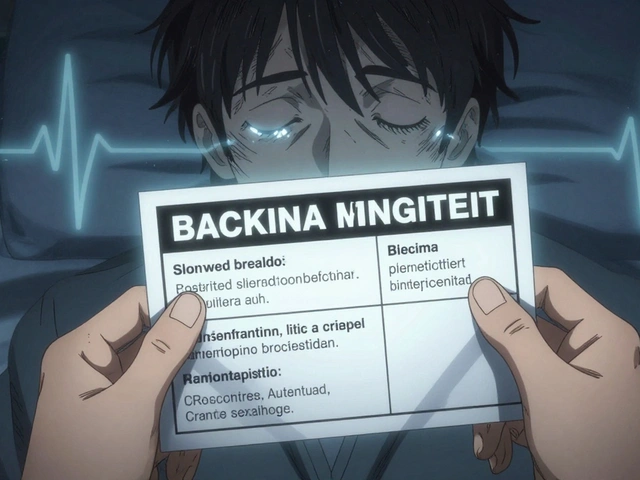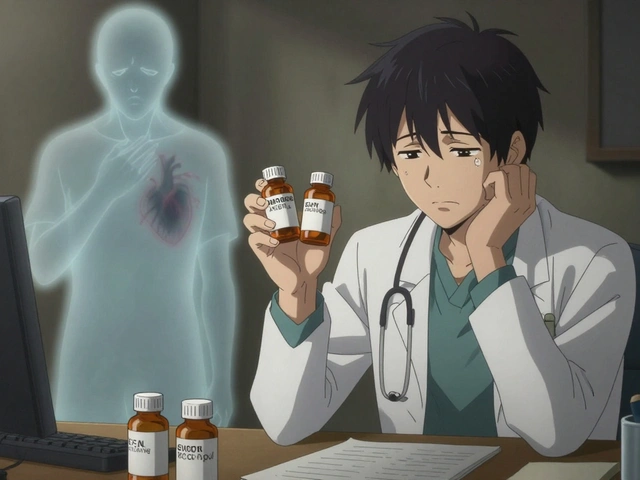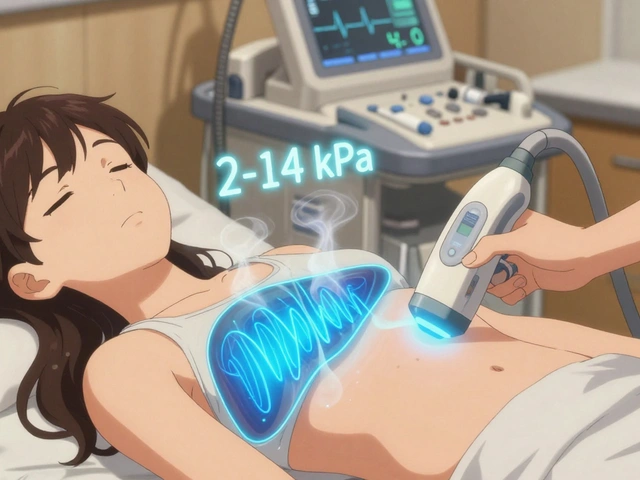Imagine finally ticking off your last dose of alendronate, only to feel a new wave of questions swirling in your mind. What do you do now to keep your bones sturdy and fracture-free? You’re not alone—this transition feels shaky for anyone who’s spent years counting out tiny white tablets every week. Let’s break down the real, practical options for keeping your skeleton solid after that final pill, beyond just crossing your fingers and hoping for the best.
Understanding What Happens After Alendronate
Finishing up an alendronate prescription often feels like stepping into the unknown. It’s one of the top prescribed drugs for osteoporosis—people rely on it for years to shore up their spinal vertebrae, hips, and wrists. Alendronate works by slowing bone breakdown, making fractures less likely in folks who have weaker bones from aging, menopause, or medications like steroids. But when you stop, your bones don’t just magically keep the defenses up. Turns out, the drug’s effects hang around for a while—sometimes years—but eventually, that protective wall gets thin again.
This lag between stopping the drug and losing some benefits is why you’ll hear about “drug holidays” from doctors. But holidays eventually end, and that’s when the risk can creep back up, especially for older women or anyone with a history of fractures. Research from 2023 in the Journal of Bone and Mineral Research showed women with the lowest bone density at the femur neck after stopping alendronate were the most at risk for breaking a bone in the following year. So, the decision isn’t just about stopping—it's about what you do immediately after.
The Burning Question: What’s The Plan B? Enter the world of options after alendronate, which pull from three main buckets: alternative medicines (like SERMs and hormone therapy), and lifestyle changes. Each of these can play a totally different role—but which is right for you?
SERMs: The Underestimated Bone Bodyguard
Selective Estrogen Receptor Modulators (SERMs) sound super technical, but they’re just medications that mimic estrogen in your bones. Why care about that? Estrogen is a bone’s BFF, especially for women post-menopause. After menopause, estrogen drops and bones, well, they pay the price. SERMs, like raloxifene, act like a stand-in for your body’s own hormone—even though they weren’t designed as a bone drug at first.
Clinical trials have shown that raloxifene cuts the chance of vertebral fractures nearly in half in women with osteoporosis, but it doesn’t really help much with hip fractures. So, picture it as a bodyguard limited to the spine. What makes SERMs interesting (and worth a longer look) is their different side effect list: unlike hormone therapy, they won’t give you the usual risks of uterine or breast cancer, but they do raise the odds for blood clots and can sometimes trigger hot flashes.
Who’s the best fit for SERMs? Usually, women recently through menopause, or those with a family history of breast cancer who want a treatment that actually reduces breast cancer risk. Bonus: SERMs don’t thicken the uterus lining. That means less worry about uterine cancer compared to hormones. And, if the fear of weight gain or bloating from “menopause drugs” turns you off, SERMs aren’t likely to mess with your weight.
Still, the catch is that they’re just less potent than the heavy-hitting antiresorptives like bisphosphonates (that’s your alendronate) or denosumab. But for people with milder osteoporosis or who’ve had to quit other bone drugs because of side effects, adding a SERM makes sense. Keep in mind, though, these don’t work for men; they’re strictly a women’s option because of how they interact with estrogen receptors. For dosing, it’s usually as straightforward as a daily pill.
One quick tip: Plan regular blood pressure and cholesterol checks while you’re on SERMs—it’s not a dealbreaker, but blood clots are sneaky, and you want to stay ahead of the risk.

Hormone Therapy: More Than Just Hot Flash Relief
The story of hormone therapy is pretty wild. For decades, doctors handed out estrogen to postmenopausal women like Halloween candy, promising youthful bones and wrinkle-free skin. But that all crashed in the early 2000s after studies linked long-term hormone use to increased breast cancer and stroke risks. Fast forward, and the advice is way more nuanced; hormones are back on the table—but only for certain women, for shorter stints, and in much lower doses.
Here’s the science bit: Estrogen therapy can slow down bone loss and even build a bit of new bone. It’s hands-down effective at keeping bones thick and less likely to break. The magic window? Women under 60 or within 10 years of menopause. For older women, the potential risks start to outweigh the rewards.
If you’re in that golden window, hormone therapy could be a smart move, especially if you’re also dealing with hot flashes, night sweats, or vaginal dryness. The real plus? Hormones help not just your bones, but your day-to-day menopause symptoms. It’s a two-for-one. For those with a uterus, doctors pair estrogen with progesterone, since taking estrogen alone increases the risk of uterine cancer. Without a uterus? Pure estrogen therapy is usually fine.
But let’s keep it real—hormones aren’t for everyone. If you have a personal or family history of blood clots, certain types of cancers, or heart disease, the answer might be a clear “no.” Always talk these risks through with a doctor who has access to your whole medical story.
Some women ask about "bioidentical" hormones from compounding pharmacies. Truth bomb: there’s just no strong research showing these work any better than what you can get at the pharmacy. Plus, compounded versions aren’t regulated for purity, so if hormone therapy is your pick, stick with FDA-approved versions for safety. Pills, patches, gels, and sprays are all options, so you can find what’s least annoying for you.
Hormone therapy can tweak your metabolism, so regular follow-ups matter. If you notice leg swelling, headaches, or sudden vision changes, call a doctor right away. And always check your prescription—is it the right dose for bones, and am I due for a review? Most doctors recommend reevaluating every six months to twelve months, adjusting the plan as your own health story changes.
Lifestyle Tweaks That Make a Surprising Difference
Okay, let’s get practical. Not everyone wants (or should) take prescription meds for years. And even if you’re on a bone drug, stacking healthy daily habits will often push your bones that extra mile.
The absolute baseline? Make sure you’re getting enough calcium and vitamin D. The National Osteoporosis Foundation still stands by 1,200 mg of calcium and at least 800-1,000 IU of vitamin D daily for women over 50. But don’t just grab the first supplement off the shelf—whole foods like Greek yogurt, chia pudding, and fortified plant milks pack a punch without weird aftertastes. Your bones soak up calcium better from food, and your gut is less likely to rebel versus high-dose supplements.
Sunlight is your best friend for vitamin D, but with work from home, sunscreen, and cloudy days, most people fall short. If you’re tired, achy, or getting sick a lot, ask your doctor to test your vitamin D. Once a deficiency kicks in, bones start giving up their own minerals to keep you ticking—which is the fast track to fracture land.
Exercise? Non-negotiable. But this isn’t about endless spin classes or acrobatics. Brisk walking 30 minutes a day, two or three resistance workouts each week (think: squats, pushups, using resistance bands), and simple balance moves can drive up bone density. Studies from 2021 show that women who do regular weight-bearing exercises cut their risk for hip fractures in half compared to couch potatoes. If you’re afraid of falling, a basic tai chi YouTube video is like magic for balance and confidence.
Let’s talk drinks and vices. More than two alcoholic drinks a day chips away at bone strength. Ditto for heavy smoking—nicotine literally slows bone healing, and studies have proven long-term smokers have lower spine density. Even soda can be a problem if it means you’re trading milk for cola—phosphoric acid in some sodas may pull calcium out of bones.
Don’t ignore your home environment. Falls cause most serious fractures in older adults. Secure loose rugs, install grab bars in the shower, and put nightlights where you wander at night. A little decluttering goes further than you think. And always, shoes with non-slip soles—fashion can wait for now.
Did you know stress can impact your bones? People who live with constant anxiety or depression tend to have higher levels of cortisol, a hormone that nudges bones to give up their calcium stash. So, relaxation isn’t just for your mood—it's an undercover win for your bones, too. Yoga, quality sleep, and regular laughter all count.
If you’re dealing with other health issues—thyroid disease, diabetes, digestive disorders—get them managed. Everything in the body is connected, and these can sneakily steal nutrients from your skeleton. Your pharmacist or doctor can help spot meds that shrink bone density, like steroids or some seizure drugs, and offer safer swaps.
There’s one super low-tech tip a lot of people skip: actually learning how to fall. Believe it or not, physical therapists teach simple rolling and landing techniques so you don’t hit bony spots directly. Kind of like teaching toddlers to fall on their butts, not their wrists. Ask your doctor if a “safe falling” class is in your area.

Making a Long-Term Plan for Your Bones
So, what’s the bottom line after hanging up your alendronate prescription? The best plan is the one tailored for your body, your risks, and your lifestyle quirks. If you’re newer to osteoporosis meds, or your bone scans still look strong, sometimes just better nutrition, exercise, and a few home tweaks can keep you on track. If your fracture risk is still high, or your bone density is dropping fast, it's smart to consider medical options like SERMs or hormone therapy—ideally with a doctor who knows your health history inside and out.
Make sure to keep getting bone density scans at the schedule your provider suggests—usually every one or two years. These aren’t just “nice to know” numbers; they're sometimes the first red flag when things are slipping, long before a fracture happens. Mark them on your calendar, set digital reminders, or just rope in a friend for encouragement—because accountability helps more than we admit.
Keep a diary of supplement use, exercise, and fall risks. It sounds fussy at first, but this journal gives real-life feedback on whether your day-to-day plan is actually working. If you feel overwhelmed, remember—you don’t need a perfect record. Just regular, honest check-ins.
If making all these changes feels like trying to juggle while biking uphill, give yourself a break. Every upgrade, no matter how simple, adds up. And don’t skip celebrating a small win—a week of morning walks, finally switching to non-slip bathroom mats, or eating more leafy greens. These small tweaks aren’t just “extras”—they’re the foundation for keeping your bones tough long after your last alendronate tablet.
Bone health after stopping alendronate isn’t a guessing game; it’s a chance to step into a new chapter armed with solid tactics and realistic, science-backed hope. Stay curious, keep asking questions, and trust your ability to build a strong, resilient frame—one choice at a time.






10 Comments
Keisha Moss Buynitzky
June 3, 2025Thank you for sharing this comprehensive overview; I understand how unsettling it can feel to transition off alendronate.
Maintaining adequate calcium and vitamin D intake remains paramount, and regular bone‑density assessments will help gauge progress.
Incorporating weight‑bearing activities such as brisk walking or resistance training can mitigate the decline in bone mass.
If hormonal fluctuations are a concern, discussing selective estrogen receptor modulators with your clinician may provide a balanced approach.
Finally, consider a multidisciplinary follow‑up that includes nutrition, physiotherapy, and endocrinology to ensure a cohesive plan.
Shivam yadav
June 21, 2025Coming from a community where traditional foods are rich in calcium, I can attest that incorporating paneer, leafy greens, and fortified milks can be both cultural and beneficial.
Pairing these with daily sunlight exposure for vitamin D respects our heritage while supporting bone health.
For those hesitant about SERMs, a collaborative discussion with the physician about personal risk factors often leads to a comfortable compromise.
Remember, consistency in gentle resistance exercises, like using a broomstick for squats, can be woven into everyday routines without disrupting cultural practices.
pallabi banerjee
July 8, 2025It helps to keep things simple: take your calcium, move a little every day, and stay in touch with your doctor.
Your bones need a steady supply of vitamin D, so a short walk in the sun can do a lot.
If you prefer not to take more pills, focus on food – dairy, beans, nuts – they are natural sources.
Also, a quick balance exercise, like standing on one foot while brushing teeth, adds safety without a big time cost.
Alex EL Shaar
July 26, 2025Alright, let’s dive into this mess – the post is packed, but I’ll try to untangle it without losing my mind.
First off, the author swears by SERMs, but did they mention the dreaded clot risk enough? Probably not, because who wants to read about that when you’re busy Googling “how to stay skinny on meds”.
Second, hormone therapy is painted as a miracle, yet the side‑effects list is longer than a grocery receipt.
Third, the lifestyle section sounds like a checklist from a bored high‑school health teacher – “drink milk, walk, avoid soda”.
What about the real world? Most people can’t afford fancy supplements, and they definitely can’t commit to “two resistance workouts per week” when they’re juggling two jobs.
Also, the article glosses over the fact that bone density scans cost a small fortune in many countries – a point worth flagging.
Let’s not forget the “safe falling” tip – nice idea, but how many physiotherapists actually offer that class? Probably zero.
Interestingly, the piece never mentions the role of magnesium, which is crucial for calcium absorption; a glaring omission.
And, while we’re at it, the reference to “2023 Journal of Bone and Mineral Research” could use a proper citation – otherwise it feels like a buzzword drop.
On a grammatical note, “your bones soak up calcium better from food” should be “your bones absorb calcium more effectively from food”.
Also, “non‑slip” should be “non‑slip”.
There’s a typo in “teh” somewhere, but I’m not pointing it out because the post is already long enough.
All in all, the advice is sound but the execution feels like it was cobbled together on a Monday morning after three coffees.
Readers deserve a clearer hierarchy: medical options first, lifestyle tweaks second, and fall‑prevention tactics third.
Finally, if you’re serious about bone health, consider a comprehensive blood panel – calcium, vitamin D, PTH, and even cortisol – before jumping on any new regimen.
That’s my two cents, hope it helps anyone trying to wade through the sea of bone‑health hype.
Anna Frerker
August 12, 2025Honestly, this is a bunch of overblown advice that sounds like a US‑centric playbook, not everyone can stick to it.
Julius Smith
August 29, 2025Great summary, very helpful! 😊👍
Brittaney Phelps
September 16, 2025Love the practical tips – especially the emphasis on daily walking and balanced meals.
Keep the vibe positive; small steps truly add up.
Remember, consistency beats perfection any day.
Stay motivated and your bones will thank you!
Kim Nguyệt Lệ
October 3, 2025The recommendations are clear and based on current evidence; regular resistance training and adequate calcium‑vitamin D intake remain foundational.
Monitoring for potential side effects of SERMs or hormone therapy is essential, and follow‑up bone density scans should be scheduled as advised.
Overall, a well‑structured plan can maintain skeletal health after discontinuing alendronate.
Rhonda Adams
October 20, 2025You're not alone in this journey – many of us have navigated the alendronate holiday and came out stronger! 🌟
Lean on your healthcare team, keep those calcium‑rich foods on the table, and celebrate each new habit you build. 😊
Remember, every little win is a step toward healthier bones.
Macy-Lynn Lytsman Piernbaum
November 6, 2025Life’s a series of tiny pivots, and swapping one med for another is just another bend in the road. 🌱
Think of your bones like a library – they need the right books (nutrients) and the occasional quiet time (rest) to stay solid.
Don’t stress the perfect plan; good enough most days is enough.
Mix in some sunshine, a splash of movement, and you’ll keep turning those pages.
Keep it chill and keep those smiles coming! 😄